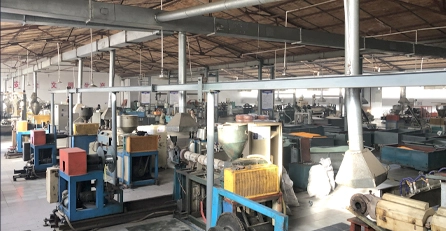Versatile and Durable Lay Flat Hoses for Efficient Water Management Solutions
The Importance and Versatility of Lay Flat Hoses
Lay flat hoses have become an essential tool in various industries, offering a practical and efficient solution for fluid transfer needs. These hoses are distinctively designed to collapse flat when not in use, making storage and transport convenient. Here, we will explore the key features, applications, and advantages of lay flat hoses.
One of the standout characteristics of lay flat hoses is their ability to handle both high and low-pressure applications. Typically made from durable materials such as PVC or rubber, these hoses are engineered to withstand harsh conditions while maintaining flexibility and light weight. Their flat profile allows for easy rolling and unrolling, which is particularly beneficial in environments where space is limited.
Lay flat hoses are widely used in agricultural settings for irrigation purposes. Farmers rely on these hoses to transport water from sources such as wells, ponds, or reservoirs to their fields. The ease of deployment and retraction means farmers can quickly adapt to changing conditions, ensuring their crops receive adequate water without the hassle of traditional rigid piping systems.
lay flat hoses

In addition to agriculture, lay flat hoses are extensively utilized in construction and firefighting
. In construction, they serve as effective means for transferring water to dust suppression systems or for concrete curing processes. The lightweight and flexible nature of lay flat hoses allows construction crews to navigate around obstacles, making them ideal for job sites with variable terrain.Firefighting teams also find lay flat hoses indispensable. They are used to deliver water from hydrants or other sources directly to the fire scene, allowing rapid response in emergency situations. Their ability to lay flat minimizes tripping hazards and maximizes water flow efficiency.
Another advantage of lay flat hoses is their cost-effectiveness. Compared to traditional hoses, lay flat options often require less maintenance and are less likely to incur damage in the field. Their compact storage when not in use saves valuable space, which is a significant consideration in both commercial and industrial settings.
In conclusion, lay flat hoses are an integral part of modern fluid transfer practices. Their versatility across various industries, coupled with their durability and ease of use, makes them a preferred choice for both professionals and hobbyists alike. As industries continue to evolve, the demand for efficient and reliable solutions like lay flat hoses will only grow, reinforcing their significance in everyday operations.
-
Welded Wire Mesh Panel: Durable, Versatile, and AffordableNewsJul.28,2025
-
Top Quality Oxy Acetylene Hoses for Sale Fit for Welding DemandsNewsJul.28,2025
-
The Future of Pneumatic Air Tubes in IndustryNewsJul.28,2025
-
Superior and Reliable LPG Hose Pipe Solutions for Every NeedNewsJul.28,2025
-
Exceptionally Durable and Versatile Premium Braided PVC TubingNewsJul.28,2025
-
Best Adapters for Connecting Garden Hose to PVC Pipe ConnectionsNewsJul.28,2025














